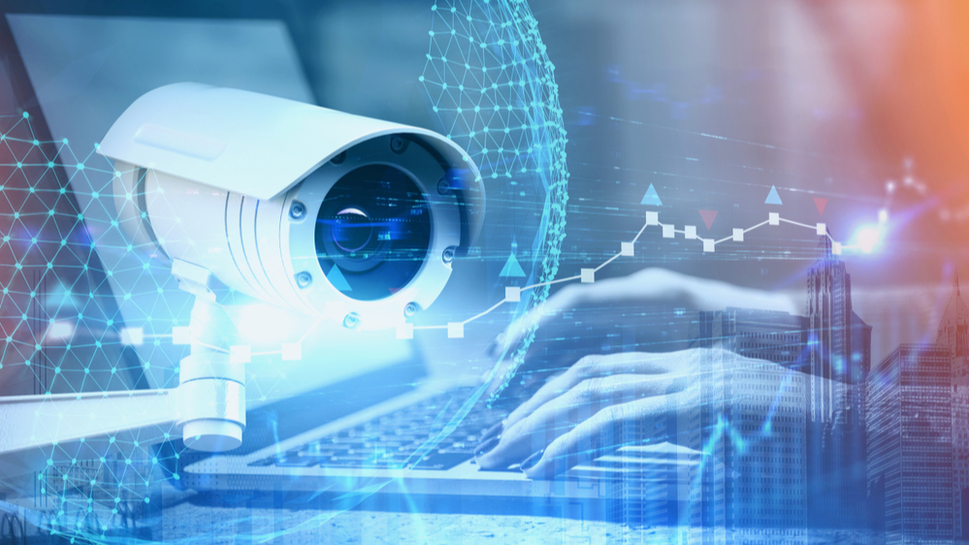
With Boris Johnson announcing that people should work from home if they can, the issue of how to keep your staff productive and motivated remotely is back in the spotlight.
Ben Booth, CEO, MaxContact.
A YouGov/Skillcast poll recently found that 12% of companies had recently introduced remote monitoring, with the number growing to 16% at larger firms. The trade union Prospect estimates that 32% of UK workers are being monitored at work using employee monitoring software.
For those in leadership positions under pressure to keep delivering the same results whilst working from home, you can easily see why managers might be tempted by software which lets them check whether their staff are working to the same standards as when they were in the office.
Never heard of remote surveillance?
Remote surveillance software, also known as ‘tattleware’ or ‘bossware,’ can log how long workers take to read and reply to messages, check their attendance at meetings and even secretly film staff from their screen.
For example, US-based software provider, Hubstaff, takes screenshots up to three times every ten-minutes to build a picture of employee productivity. Hubstaff say they have quadrupled their UK customer base since February.
This technology has become more and more popular in the last 18 months. We found that Google queries for ‘remote monitoring’ had increased by 212% year-on-year during the height of the coronavirus crisis.
So, here’s the question for business owners, is this something you need to invest in?
Are you a pro? Subscribe to our newsletter
Sign up to the TechRadar Pro newsletter to get all the top news, opinion, features and guidance your business needs to succeed!
The productivity argument
Tracking how your employees spend their time does naturally increase their productivity. It limits their access to distractions and helps them make the most of their time at work, a bit like CCTV cameras in a warehouse. Collecting information on your employees’ computer usage can help business owners and managers take the time employees spend on non-work-related browsing and messaging and put this time to a more productive use.
The counter
But does our productivity working from home dip enough that managers need to find ways to maximize our time at work?
During the coronavirus pandemic, several studies have shown that working from home can actually increase productivity. Workplace inclusion non-profit Catalyst recently found that if done well, remote working can increase innovation by 63% and work engagement by 75%.
Also, there is evidence to suggest that monitoring staff can make them feel vulnerable, and less creative as well as reducing job satisfaction and lowering morale.
The legal side
Silkie Carlo, director of the anti-surveillance charity Big Brother Watch, says, “Although bosses should tell you if they are using spyware technology, they do not have to obtain your consent to do so.”
Hayfa Mohdzaini, senior researcher at the Chartered Institute of Personnel and Development, says that any measures businesses take need to be “relevant, necessary and respect people's privacy.”
A number of domestic and European laws set down rules on the use of surveillance technologies. Personal data (information about someone who is identified) is protected under the Data Protection Act. This means that data should be used fairly, lawfully and transparently. It should be for a specified purpose and should not be kept for longer than necessary.
Organizations who abuse access to their employees’ data risk breaching their employees’ rights to privacy and may open themselves to potential enforcement actions by the Information Commissioner’s Office. H&M Germany was recently fined over £32 million by their data regulator for breaches of European data protection law and keeping excessive records on their employees.
Getting surveillance right
Every business has its own unique challenges. You might be reading this thinking that employee surveillance software is just what you need to solve a problem you’ve been struggling with.
If you are considering using software to monitor your employees’ productivity, make sure you communicate this properly and set clear boundaries.
You should be open and honest with your team. Explain the rationale behind your decision and provide some examples of the problems you’ve faced that managing performance in this way will solve.
Also, with business laptops now practically universal it’s highly likely your employees will be using their work computer our of hours. Set clear boundaries on your surveillance so you’re not unintentionally accessing their personal data, such as internet banking passwords and Facebook messages.
Trust and loyalty
In my opinion, employee surveillance software might be right for the minority of organizations but building trust and loyalty organically is likely to be a much more effective way of ensuring your employees are working as you would like them to when working from home.
Simply communicating clear objectives and KPIs will help you judge whether your teams are meeting or exceeding the levels and quality of work you expect of them without you having to invest in new software or risk annoying your workforce.
Connect securely to work with the best business VPN.
Ben Booth, CEO, MaxContact.